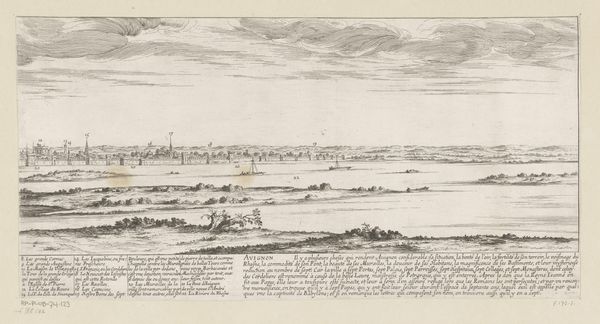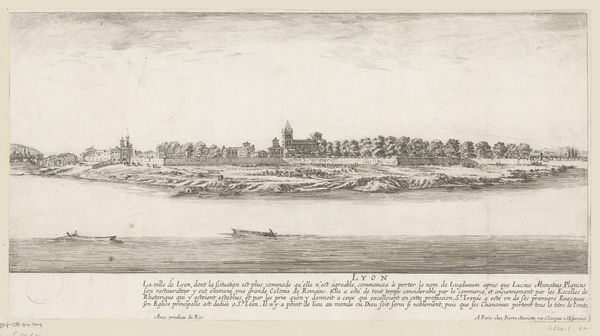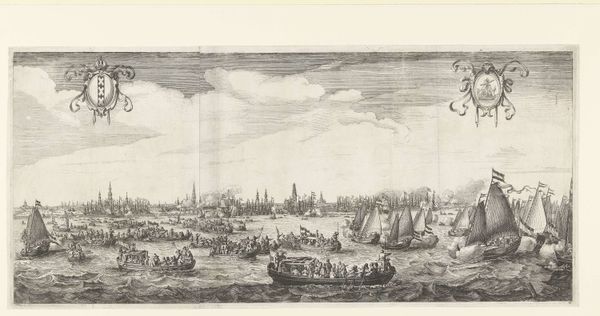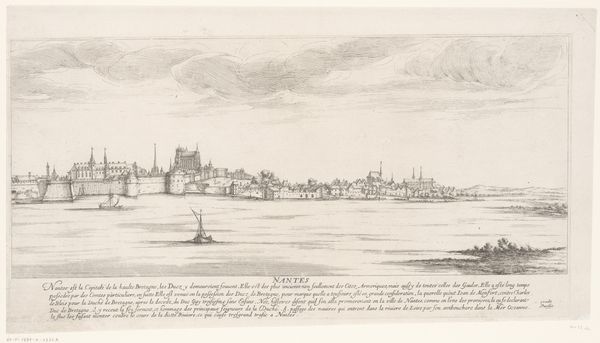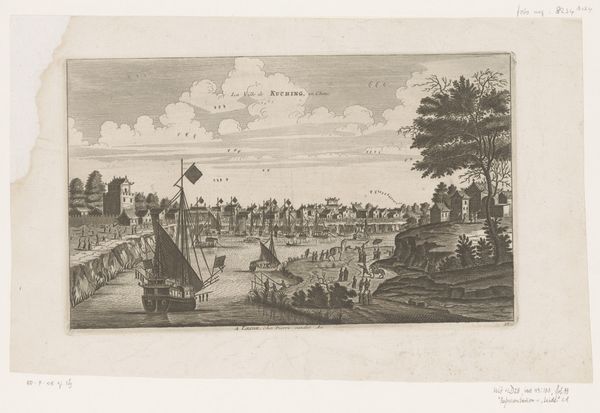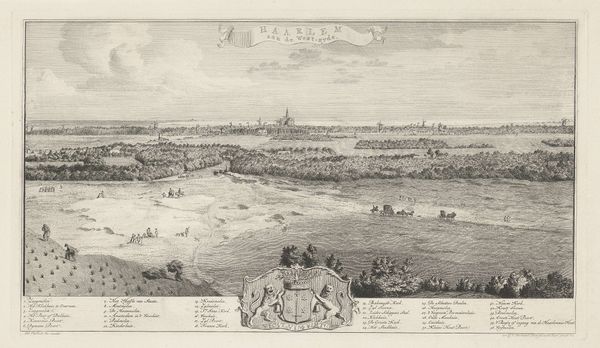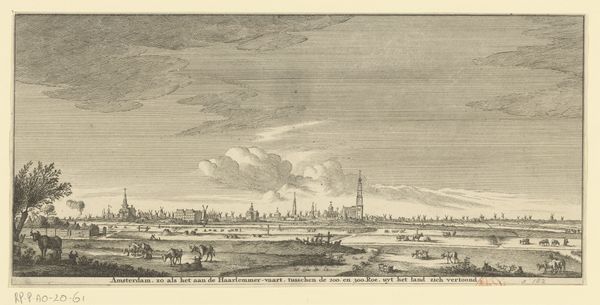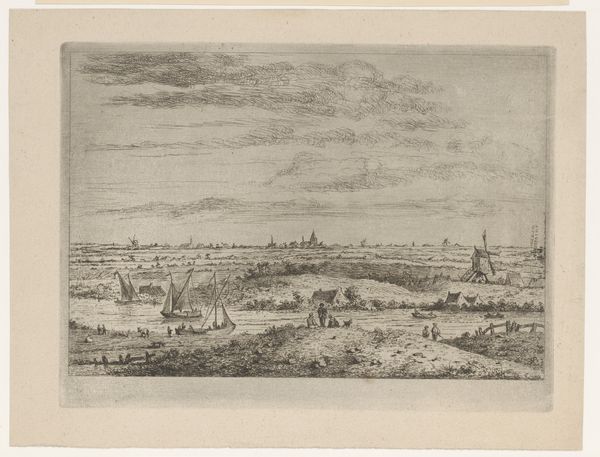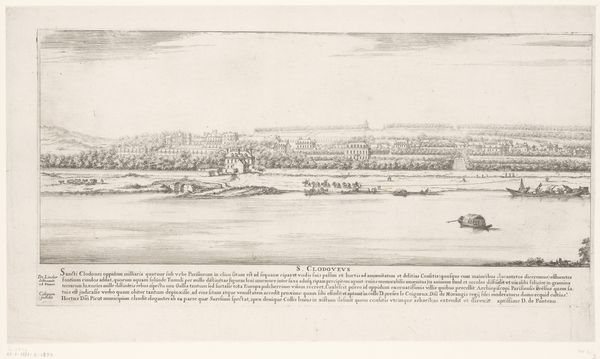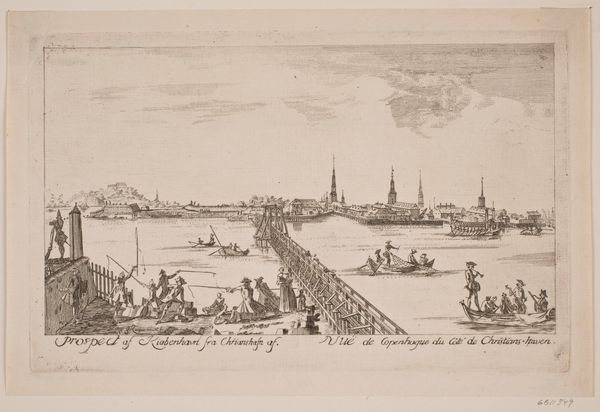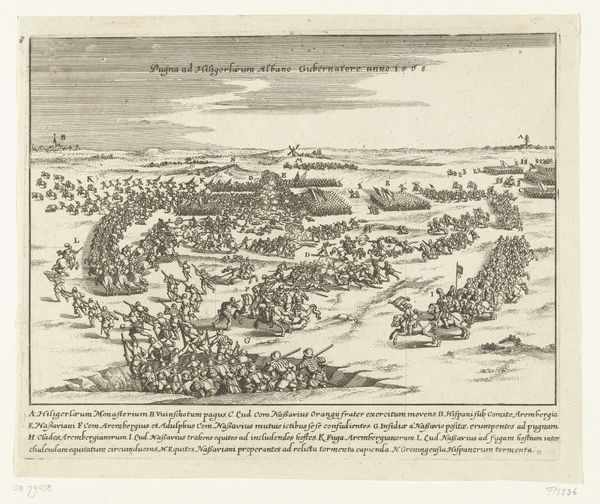
print, etching, engraving
#
baroque
# print
#
etching
#
landscape
#
river
#
cityscape
#
engraving
Dimensions: height 206 mm, width 410 mm
Copyright: Rijks Museum: Open Domain
This print of “Zicht op Nantes” was created by François Collignon in the 17th century using etching. Collignon's print represents a particular kind of early modern labor: the skilled work of the printmaker, who carefully incises an image on a copper plate, ready for reproduction. The technique relies on acids to bite into the metal, and a press to transfer the image onto paper. This was a laborious process, demanding a high degree of technical skill. Notice how the etched lines define the buildings, water, and sky. The material qualities of the copper plate influence the print's appearance, with its capacity to hold fine, detailed lines. It's a good example of how technical craft shaped the circulation of images and information. Collignon would have been part of a network of workshops, publishers and distributors, all contributing to the spread of visual knowledge. Considering the time and skill involved, we can appreciate the value placed on such images in early modern Europe. It reminds us that even seemingly simple images can be the product of considerable effort and a complex social context.
Comments
No comments
Be the first to comment and join the conversation on the ultimate creative platform.
